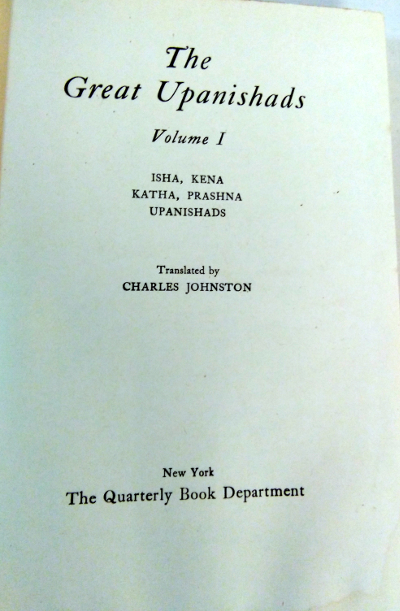Translations of the Isha, Kena, Katha & Prashna Upanishads.
About the Upanishads (from Wikipedia):
The Upanishads are a collection of ancient Sanskrit philosophical texts that contain some of the central philosophical ideas of Hinduism, some of which are shared with Buddhism, Jainism, and Sikhism. They are among the most important literature in the history of Indian philosophy, religions and culture and talk about metaphysics, ontology, teleology, ethics, aesthetics, soteriology and the philosophy of the self. The Upanishads played an important role in the development of spiritual ideas in ancient India, and they marked a transition from Vedic ritualism to new ideas and institutions.Early Upanishads are considered by Hindus as part of their scriptures (śruti) that discuss the nature of ultimate reality (brahman) and the character of and path to spiritual liberation (mokṣa or mukti).
About the author (from Wikipedia):
Charles Johnston (1867–1931) was an Irish writer, journalist, theosophist and Sanskrit scholar.
Charles Johnston studied Oriental Studies, and learned Sanskrit, Russian and German. Among his classmates were William Butler Yeats and George William Russell, with whom he shared an interest in the occult.
Later, he worked as a journalist. In 1884, he read Alfred Percy Sinnett’s work The Occult World and founded, together with Yeats and Russell on 16 June 1885, the Hermetic Society in Dublin. He was responsible for introducing W. B. Yeats to Madame Blavatsky in spring 1887.
On 14 October 1888 he married Vera Vladimirovna de Zhelihovsky (1864-1923) the niece of Helena Blavatsky.
He also entered the Indian Civil Service the same year, and later served in the British Bengal Service.
He translated several works from Sanskrit and Russian. As an author, he devoted himself primarily to philosophical and theosophical topics.
He was president of the Irish Literary Society.



